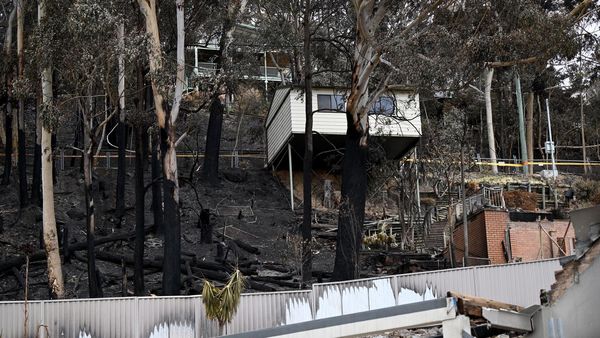
One of Australia's leading coal regions is in flux as ageing power plants close and governments push to cut carbon emissions.
Community organisation Hunter Renewal has released a blueprint that maps out an alternative to coal and what could be one of the biggest landscape restoration challenges ever undertaken.
The Hunter Valley produces mostly high-quality thermal coal used for energy generation here and abroad, and some metallurgical coal used in steelmaking.
More than 130,000 hectares will become available for new use in the NSW Hunter region as mines close over the next 20 years.
Some 50,000 hectares is buffer land, which is the unused area between mining pits and surrounding properties.
Increasing the level of rehabilitation and land management and extending this to buffer lands could deliver 670 full-time jobs to the Hunter, according to the report.
If renewable energy precincts are added, then 13,600 jobs could be created with a $3.7 billion boost to the local economy in the next two decades.
The blueprint supports the return of mine-owned land to traditional owners, especially the buffer zones.
It also recommends an independent Hunter Rehabilitation and Restoration Commission, established under state laws.
The Hunter is a target of the state government push into renewable energy and the federal government's $20 billion plan to rewire Australia and the Powering the Regions Fund for new clean energy and decarbonising industry.
But the community wants a central role.
"We don't want a top-down approach," Singleton resident and group spokeswoman Sophie Nichols said.
She said so many Hunter Valley locals had spent their lives working for the fossil fuel industry and want a say in what comes next.
If politicians listened to locals, the Hunter could have a diversified, sustainable economy with a strong focus on clean energy industries, a restored environment and healthy communities, Ms Nichols said.
Since last year, the Hunter has received a share of annual royalties under the NSW Royalties for Rejuvenation scheme.
But Hunter Renewal says it is a fraction of what is required to prepare communities for a post-coal future.
If NSW had followed Queensland's lead on raising the coal tax, the state could have had an extra $23 billion in royalties to use in last financial year, the report says.
It also found a $22 billion shortfall in bonds held by the NSW government to cover the rehabilitation of disturbed mine land in the Hunter.
Some 25 deep pits with a surface area equivalent to Sydney Harbour are expected to remain, with no current plan for rehabilitation in place, the report says.
The NSW government has recognised the region is changing and in December released the Hunter Regional Plan 2041 for sustainable growth.
The Hunter Renewal project is led by the Hunter Central Rivers Alliance and Lock the Gate Alliance.







